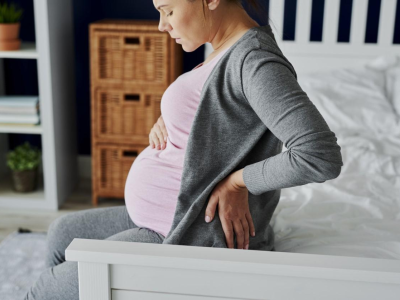Editor's note: This is the fifth in a seven-part series investigating the prospects for development of vaccines to head off the threat of an influenza pandemic posed by the H5N1 avian influenza virus. The series puts promising advances in vaccine technology in perspective by illuminating the formidable barriers to producing large amounts of an effective and widely usable vaccine in a short time frame. Part 4 examined the possibility of using adjuvants to stretch the supply of pandemic vaccines and the regulatory barriers to that strategy.
Oct 31, 2007 (CIDRAP News) – Experiments with vaccine adjuvants have raised some hope of removing one of the great stumbling blocks to pandemic influenza preparedness: the impossibility of making a vaccine that protects against a pandemic virus before that virus actually emerges.
A number of the studies that have shown adjuvants may be able to stretch the vaccine supply also demonstrated a secondary benefit: The formulas protected not only against the H5N1 flu strain on which they were based, but against other H5N1 strains as well, a phenomenon called cross-reactive protection (see Bibliography: Nicholson 2001, Stephenson 2005, Govorkova 2006, Hehme 2007, Hoffenbach 2007). Most recently, the GlaxoSmithKline-backed team that described an acceptable immune response after two adjuvanted 3.8-microgram (mcg) doses found that three fourths of their subjects were protected not only against the clade 1 Vietnam virus on which the vaccine was based, but against a drifted clade 2 virus from Indonesia as well (see Bibliography: Leroux-Roels 2007).
The findings are not completely understood, though researchers agree that they make biological sense. Adjuvants stimulate the immune system in some manner that is broader than and different from the body’s reaction to the antigen packaged with them. The discovery that adjuvanted flu vaccines may invoke cross-reactivity has generated tremendous excitement—because that could allow production of at least partially protective vaccines well in advance of a pandemic’s beginning.
A tough ethical problem
But the next logical step—that if vaccines can be formulated without waiting for a pandemic, they could be administered before a pandemic began—is a much tougher one to take, and policy makers are approaching it with great caution. The scientific, logistical, and especially ethical questions raised by prepandemic vaccination are grave.
Any vaccination that took place before a pandemic was detected would offer uncertain amounts of both benefit and risk. The vaccine might be cross-protective against a future pandemic—but the lag time to the pandemic’s emergence might be so long that the vaccination would seem pointless. As well, the vaccine might cause a greater-than-expected rate of adverse events, causing both direct harm to recipients and indirect damage to government credibility—results that would be particularly difficult to tolerate if vaccination proved unnecessary because the pandemic did not arrive. Those risks are not theoretical: They have been demonstrated in the United States twice in recent history, in the abortive 2002 smallpox vaccination campaign and the 1976 swine-flu campaign (see Bibliography: Kotalik 2005), which has haunted US flu decision-making ever since.
The danger demonstrated by both those campaigns, of causing adverse events while protecting against a disease that might never arise, has been noted in World Health Organization (WHO) policies as well. "Possible high-risk shortcuts in response to a potential emergency would be difficult to justify prior to the actual occurrence of the emergency," the agency said after the June 2006 meeting of its Global Advisory Committee on Vaccine Safety. "Effectiveness of pandemic vaccines will not be known before the pandemic and possibly only after it is over" (see Bibliography: WHO 2006: Global Advisory Committee on Vaccine Safety, 6-7 June 2006).
Yet the potential benefits of prepandemic vaccination are so alluring that governments have begun gingerly to lay groundwork for its consideration, despite the obvious difficulties of putting the idea into practice.
"Extraordinary threats call for consideration of innovative strategies that, in less-threatening circumstances, might be dismissed," Bruce Gellin and Ben Schwartz of the Department of Health and Human Services' National Vaccine Program Office wrote 2 years ago. "Although it has been assumed that pandemic vaccine cannot be stockpiled or that vaccination cannot occur before the start of a pandemic, might these approaches actually be possible? . . . Would receipt of a vaccine prepared before the pandemic be effective in providing some protection or in priming recipients so a single subsequent dose of vaccine would be protective?" (see Bibliography: Schwartz 2005).
The prime-boost strategy
The most likely and biologically plausible use of prepandemic vaccination would be as the first half of a "prime-boost" series. People would still be given the two doses of vaccine necessary to provoke immunity in a naïve individual. But the doses would be based on different vaccine strains—the first an early best guess, the second tuned to the pandemic strain—and could be given not weeks but months or years apart if the science supported it.
At the moment, however, the science is thin. Much of the support for priming has come from animal studies (see Bibliography: Lipatov 2005, Govorkova 2006, Kreijtz 2007) or via computer modeling (see Bibliography: Longini 2005, Ferguson 2006, Germann 2006). A few small studies in humans have shown promising results. In one, serum from 15 volunteers who received three doses over 16 months of an adjuvanted vaccine based on a 1997 H5N3 isolate showed significant antibody response against H5N1 strains isolated years later (see Bibliography: Stephenson 2005). In another, 37 participants who had been given a baculovirus-grown, clade 3 H5 vaccine in 1998 were boosted with a single dose of the unadjuvanted 90-mcg Sanofi vaccine in 2005, and showed much higher antibody responses than participants who had not been primed but received one or two doses of the 90-mcg vaccine (see Bibliography: Treanor 2007: Immune responses). And researchers at a conference earlier this year reported that some of the participants in the phase 3 trial of the 90-mcg Sanofi vaccine were boosted with a third dose 6 months after their second dose and showed a significant rise in antibody levels that lasted for 6 months (see Bibliography: Zangwill 2007).
Hurdles are many
So many steps separate those early results from an agreed-upon policy that would allow for prepandemic vaccines—in an annual flu shot or stockpiled until the WHO declares a pandemic imminent—that it is unrealistic to expect them to be created any time soon. The scientific questions alone are significant and novel.
"I think priming should be done, but I am not sure how it should be done," said Dr. John Wood, principal scientist in the division of virology at the United Kingdom's National Institute for Biological Standards and Control. "What we don't know is how low you can go to actually prime people. It may be that you can go much lower than where we can detect antibody. That is a regulatory headache, because you have to demonstrate that you are doing something, but there is a potential there" (see Bibliography: Wood 2007: author interview).
To achieve prepandemic vaccines, researchers would have to ascertain the right dose and dose interval, determine how long priming lasts, and solve the puzzle of measuring primed immunity. Further, regulatory authorities would have to determine the trial design that could deliver those answers, the public discussion that would be necessary for prepandemic vaccines to be accepted, and the safety data that would need to be gathered once the vaccines went into use (see Bibliography: Goodman 2007).
Recognizing those hurdles, the European Centre for Disease Prevention and Control said in August that while it welcomes the development of prepandemic vaccines, it would not support administering them until a WHO declaration of pandemic phase 5 or 6, meaning significant human-to-human transmission is occurring or a pandemic is under way (see Bibliography: ECDC 2007: "Pre-pandemic" vaccines might offer protection but uncertainties remain).
The pandemic vaccine puzzle
Part 1: Flu research: a legacy of neglect
Part 2: Vaccine production capacity falls far short
Part 3: H5N1 poses major immunologic challenges
Part 4: The promise and problems of adjuvants
Part 5: What role for prepandemic vaccination?
Part 6: Looking to novel vaccine technologies
Part 7: Time for a vaccine 'Manhattan Project'?
Bibliography

















